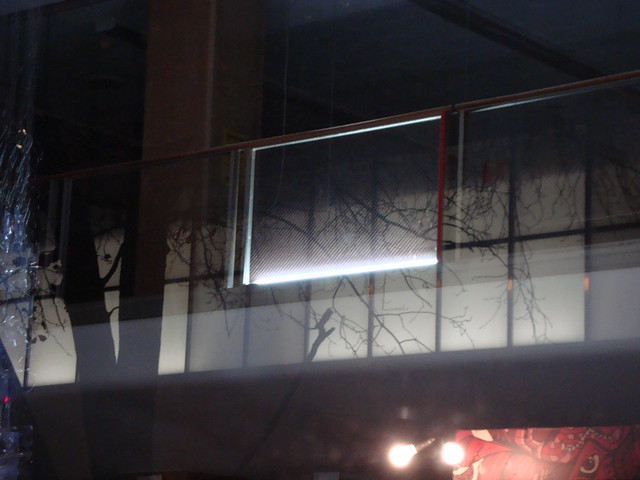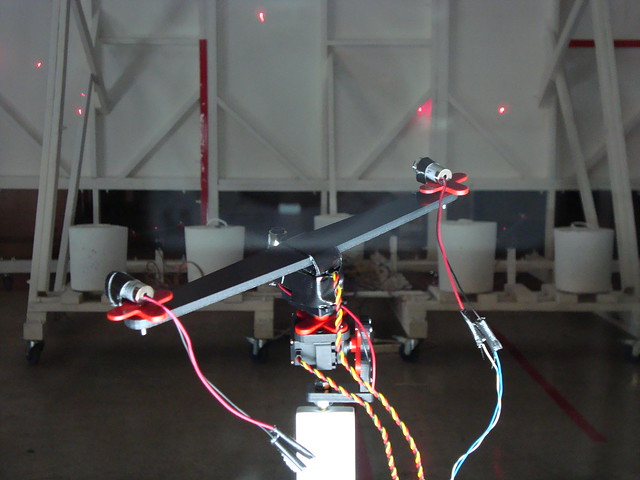last week in class we looked at the cognitive psychology effect called priming
here’s a definition:
Priming refers to a increased sensitivity to certain stimuli due to prior experience. Because priming it believed to occur outside of conscious awareness, it is different from memory that relies on the direct retrieval of information. Direct retrieval utilizes explicit memory, while priming relies on implicit memory. Research has also shown that the affects of priming can impact the decision-making process (Jacoby, 1983). about.com
our decisions and behaviors can be subliminally influenced as we respond subconsciously to environmental stimuli.
the wikipedia entry goes into much more detail, and gets into perceptual vs. conceptual priming, and more.
John Bargh, currently of Yale, is considered a pioneer in the field:
[youtube]http://www.youtube.com/watch?v=i1OVhlRpwJc[/youtube]
below is Derren Brown’s subliminal advertising project, (we also watched this in class) – he gets into detail about how this worked at the end, he has another elaborate priming scheme featuring Simon Pegg, too – but that one occurs in very much of a lab setting – the one below uses priming elements embedded in the outside world, and based on my previous post, it’s a bit more interesting:
[youtube]http://www.youtube.com/watch?v=ZyQjr1YL0zg[/youtube]
here’s an excellent lecture by Daniel Kahneman where he gets into priming, intuition, associative coherence, anchoring, system 1 and system 2 cognitive processes, and framing. the lecture is preceded by a lengthy introduction, and the ideas about priming begin around minute 20.
[youtube]http://www.youtube.com/watch?v=dddFfRaBPqg[/youtube]
we also watched these short videos of Brian Wansink’s experiments into mindful (or often mindless…) eating. i think you’ll see the connection with the videos above – two quotes of Wansink’s that come to mind are, “do you think you’re smarter than a bowl?”, and, “the best diets are the ones we don’t know we’re on.”
[youtube]http://www.youtube.com/watch?v=h-pMIlpsXqQ[/youtube]
[youtube]http://www.youtube.com/watch?v=UxKmgQZU6Hw[/youtube]
to me, priming effects (and their related associative coherencies, coupled with the ways we seem to process them) are interesting because they demonstrate how persistently sensitive to, and dependent on our environment we are – just like any other animal on this planet. the conscious mind is one feature of our experience but, it seems, is not in any way the predominant, controlling influence some of us seem to believe it is. as an artist, designer, and thinker i find this work inspiring as it opens the doors to increased learning by making subtle changes to the environment that amount to asking it questions. i feel that i want to understand these phenomena better, and i feel that increased understanding can be developed by, in reference to my previous post, observing the natural experiments going on all around (and within me), and developing methods appropriate to my environment (the “field”) to reveal its features in greater detail. in short, i find Kahneman, Bargh, et al opening the door to field research, actual research, utterly appropriate to what artists and designers have always done – namely, building things (including making gestures) and placing them in given environments.
here’s a quote by Daniel Kahneman from an EDGE master class (this excerpt is near the end):
…We are all aware that our behavior and our thoughts and feelings are highly context-dependent: none of us is quite the same person at home and in the office, in bed or in the subway. We are used to the context-dependency of our behavior and we have stories that make sense of it—social pressure, norms etc. What we are learning from the priming-anchoring effects is that context-dependency is mediated in part by multiple subtle cues of which we are not necessarily aware. The effect of pictures of eyes on contributions to the honesty box illustrates this. People were barely aware of this contextual cue and had no idea it had a large effect on their behavior—they were responding pretty much as if they were under observation. The example shows that it does not take actual fear of social sanctions to make us behave in a manner that would be appropriate in a truly social context. I believe that if you consider the factors that govern our adjustments to the contexts of our lives, the suggestive effects of primes and anchors should become less mysterious.
The novelty of the recent priming literature is in something that I called “Associative coherence” or “the poetry of priming”. The characteristic of our responses to stimuli (I believe I used the word VOMIT as an example) is that they are coherent—the entire associative machinery (including the autonomic and skeletal responses that the machinery controls) seems to be reset for a new context. We are more alert, we are prepared to recognize stimuli that are predictable (in a Bayesian sense) in the new context, we are ready to escape etc. This coherent response makes a great deal of sense in an evolutionary context. The fact that some associations appear bizarrely symbolic (e.g., to notions of distance or reminders of money) makes sense in the context of theories of “embodied cognition”, which trace some of the concepts people have to early experiences, e.g., of social and physical distance or of the difference between situations in which money and exchange are or are not relevant).
Finally, let’s look at the importance of the phenomena. Perhaps wrongly, I read Nathan as proposing that the effects are either extremely powerful or negligible, and my response was that they are somewhere in the middle. I find it helpful to think of behavior as a choice of values along multiple continua (e.g., of friendliness, wariness, effort, driving speed, etc.). At any one time each of these features of our behavior and mental state can be represented as an equilibrium, which is influenced by multiple forces, some of which are internal (habits, intentions, stored knowledge) others drawn from the context. We are not specifically aware of all these forces (any more than we are fully aware of what determines our choice of speed on a winding road), but they are at work, and priming is one of the ways this comes about.


